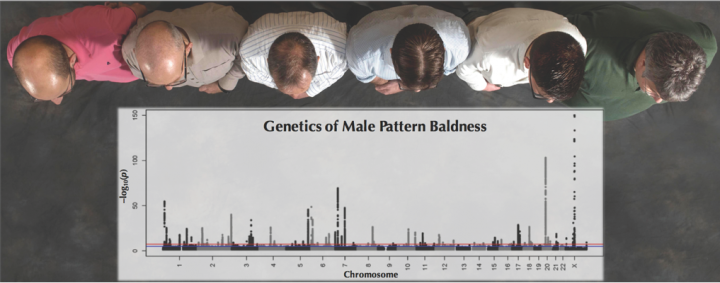Uncovering the genetics of male pattern baldness
February 2017: Study of 52,000 men leads researchers to identify genetic markers that help predict the odds of men losing their hair.

A genomic study of baldness identified more than 200 genetic regions involved in this common, but to some, embarrassing condition. These genetic variants could be used to predict a man’s chance of severe hair loss.
Before this new study, only a handful of genes related to baldness had been identified. The University of Edinburgh scientists examined genomic and health data from over 52,000 male participants of the UK Biobank, performing a genome-wide association study of baldness. They pinpointed 287 genetic regions linked to the condition.
The researchers created a formula to try and predict the likelihood that a person will go bald, based on the presence or absence of certain genetic markers. Accurate predictions for an individual are still some way off, but the results can help to identify sub-groups of the population for which the risk of hair loss is much higher.
The authors commented that they did not collect information on the age at which the men started losing their hair, but that they would expect to see even stronger genetic associations with hair loss if they were able to identify those with early-onset hair loss.
The study’s principal investigator, Dr Riccardo Marioni, from The University of Edinburgh’s Centre for Genomic and Experimental Medicine, said:
“We are still a long way from making an accurate prediction for an individual's hair loss pattern. However, these results take us one step closer. The findings pave the way for an improved understanding of the genetic causes of hair loss.”
The study is the largest genetic analysis of male pattern baldness to date. Many of the identified genes are related to hair structure and development. They could provide possible targets for drug development to treat baldness or related conditions.
The study was published on February 14th, 2017 in PLOS Genetics.
Related links:
Full journal article: Marioni et al., PLOS Genetics 12(2) (doi:10.1371/journal.pgen.1006594)


